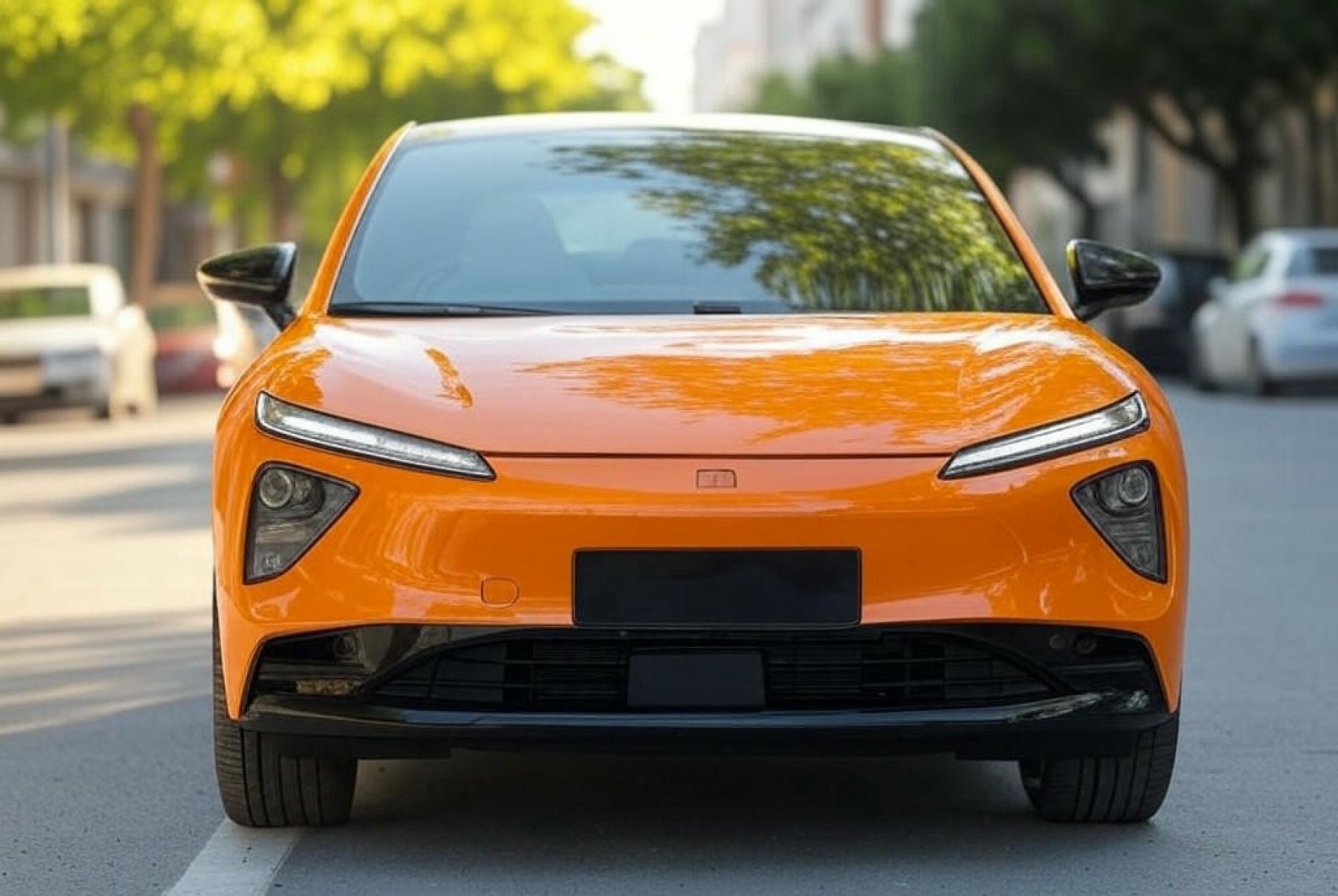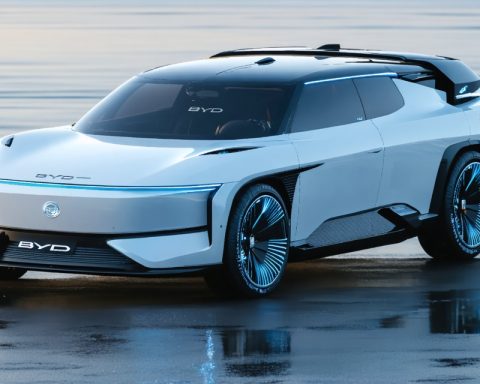- Xiaomi raises $5.5 billion by selling 800 million shares to propel its electric vehicle (EV) ambitions.
- The shares were sold at a 6.6% discount, priced at 53.25 Hong Kong dollars each.
- Xiaomi aims to boost research, technology development, and global EV expansion.
- The company increased its 2025 EV delivery target from 300,000 to 350,000 units and expects 2024 revenues of 321 billion yuan ($44 billion).
- Xiaomi plans international EV shipments by 2027 and is expanding its auto manufacturing infrastructure in Beijing.
- This move highlights the industry’s shift towards sustainability and innovation.
- Xiaomi’s strategy illustrates the convergence of tech and automotive sectors, emphasizing bold and innovative leadership.
A resounding buzz reverberates through the tech and automotive worlds as Xiaomi, the Chinese tech titan better known for its innovative smartphones, has unveiled an audacious financial maneuver. With a fortitude as bold as its visions, Xiaomi has swelled its capital coffers by a staggering $5.5 billion, thrusting itself deeper into the electric vehicle (EV) market.
Peering into the heart of this massive capital raise, Xiaomi executed the sale of 800 million shares, each priced at 53.25 Hong Kong dollars, effectively expanding its previously planned share sale size. This strategic move, aligning just beneath the price spectrum proposed to investors, added a tantalizing 6.6% discount compared to the previous trading session’s close. With this influx, Xiaomi aims to fuel its aspirations of expansive growth and accelerated advancements in research and technology development.
Having only ventured into EV manufacturing in the past year, Xiaomi is not merely dipping a toe into the vast seas of the automotive sector; it’s fashioning a vessel set on uncharted horizons. Last week, in a display of unwavering confidence, it elevated its 2025 EV delivery target from 300,000 units to an ambitious 350,000. Projections for 2024 mark a significant milestone with estimated revenues of 321 billion yuan ($44 billion), fueled largely by the anticipated delivery of over 135,000 units of their signature sedan, the SU7.
This expansion is not contained within national borders; Xiaomi’s global ambitions are cemented with plans to ship internationally by 2027. Eying strategic growth, the company is poised to build out its infrastructure. Reports reveal the acquisition of 52 hectares in southern Beijing, earmarked for the third phase of an expansive auto manufacturing complex. Here, the hum of machines and the clangor of construction will soon compose a symphonic march toward a future dominated by electric vehicles.
Xiaomi’s foray into EVs underscores a broader narrative reflecting the seismic shifts within the industry—a testament to the relentless drive for sustainability and innovation. As consumers worldwide clamor for more environmentally friendly alternatives, the boundary-pushing spirit of companies like Xiaomi paves the road towards a greener tomorrow.
In this remarkable chapter of industrial history, Xiaomi teaches the world a paramount lesson: Modern success demands audacity as much as technology. With unwavering commitment to research, expansion, and a global vision, Xiaomi is navigating toward a future where the line between tech giants and automotive leaders continues to blur, all while steering us ever closer to a sustainable, electrified tomorrow.
Xiaomi’s Bold Electric Vehicle Adventure: What You Need to Know and Why It Matters
Exploring Xiaomi’s Electric Vehicle Ventures
Xiaomi’s entry into the electric vehicle (EV) market signifies a transformative phase not just for the company, but for the automotive industry as a whole. With a recent capital raise of $5.5 billion, Xiaomi is poised to revolutionize the sector by leveraging its technological prowess and innovative spirit that has long been synonymous with its brand in the smartphone market.
Market Trends and Industry Predictions
Xiaomi’s aggressive target of delivering 350,000 EVs by 2025 highlights a burgeoning trend in the automotive industry: the shift towards electric mobility. This aligns with global market forecasts that predict the EV sector will reach a valuation of approximately $802 billion by 2027, propelled by increased demand for sustainable transport solutions (Statista, 2023).
How Xiaomi Plans to Dominate the EV Market
1. Expansive Infrastructure: Xiaomi’s acquisition of 52 hectares in southern Beijing for a manufacturing complex illustrates its commitment to building an extensive production network. This move will support its increased manufacturing capacity and R&D efforts.
2. Global Outreach by 2027: The company’s vision includes international shipping plans, setting the stage for a disruptive entrance into global markets that are ready for competitive EV offerings.
3. Revolutionary Models and Specs: Xiaomi’s flagship model, the SU7 sedan, is projected to lead sales into 2024, with over 135,000 units expected to be delivered. Features are speculated to include advanced battery technology, AI integration, and perhaps autonomous driving capabilities, reflecting Xiaomi’s expertise in electronics and AI.
Pressing Questions Answered
1. Why is Xiaomi entering the EV market?
Xiaomi aims to diversify its portfolio beyond consumer electronics, tapping into the growing demand for eco-friendly transportation. This move is backed by its large financial war chest and expertise in innovative technology.
2. How will Xiaomi differentiate itself from established players like Tesla?
Xiaomi’s ability to leverage its vast infrastructure, technological agility, and strong brand recognition across Asia will be key differentiators. Competitive pricing and integration of advanced AI features could also set Xiaomi vehicles apart.
3. What are the potential risks and limitations for Xiaomi?
Entering the EV market involves challenges such as establishing a distribution network, regulatory compliance, and competition from established automakers. Scalability and supply chain constraints also pose concerns.
Pros and Cons Overview
Pros:
– Strong financial position to support R&D and infrastructure development.
– Potential for significant market impact with innovative and affordable products.
– Synergy with existing technology and AI advancements.
Cons:
– Intense competition from major automotive and tech companies.
– High initial capital and operational costs.
– Market uncertainty and evolving consumer preferences.
Conclusion: Your Path to a Sustainable Future
Xiaomi’s endeavor in the EV field exemplifies how tech companies can pivot into new market territories, driven by sustainability imperatives and consumer demand. For consumers and investors alike, Xiaomi’s move offers a fascinating opportunity to witness and partake in the evolving narrative of clean energy and innovative technology.
For anyone considering an EV purchase in the coming years, staying informed about Xiaomi’s advancements can offer insights into emerging trends and features that might shape the future of driving. To track further developments in technology and innovation, consider exploring comprehensive avenues like Mi.com.
Quick Tips for Buyers
– Research: Stay updated on Xiaomi’s product launches and specs.
– Eco-Incentives: Look for government incentives that may apply to EV purchases.
– Test Drive: When possible, participate in demo events to experience Xiaomi’s innovations firsthand.
By embracing Xiaomi’s vision, consumers and industry watchers alike can be part of a transformative journey toward sustainable urban mobility.














